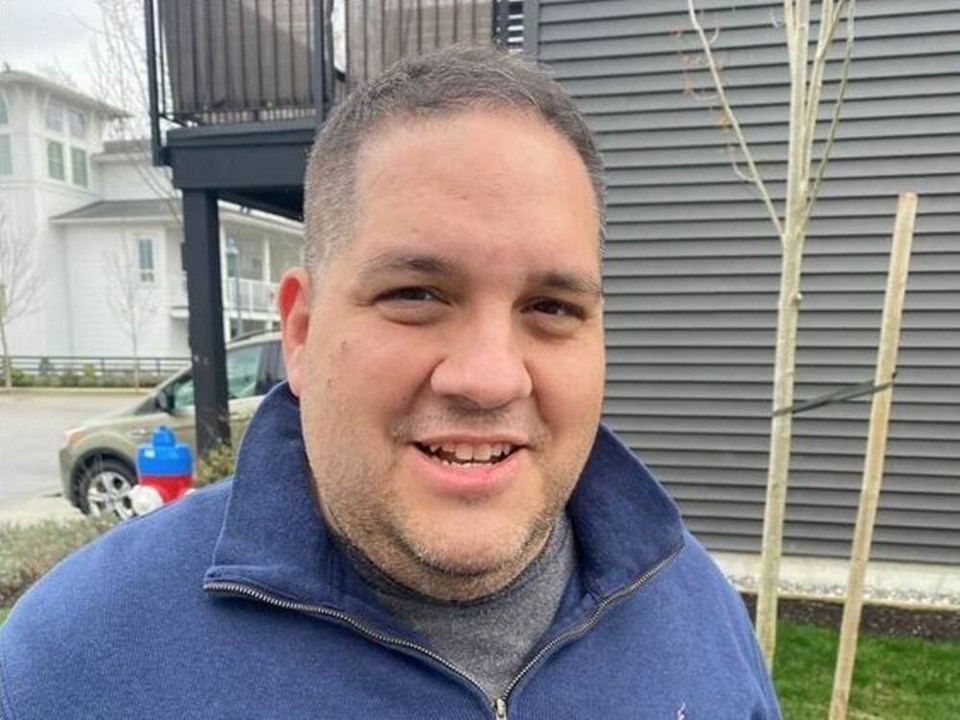A father of two from Tsawwassen has lost faith in B.C.’s ambulance service after he says he was “left to die on the side of the road” after suffering a stroke.
Layne French, 36, said despite describing his symptoms that included vision loss, paralysis on the right side of his body and slurred speech, paramedics never came and he ended up being driven to Richmond Hospital by his parents.
“I basically survived due to my body and the miracles of the human body, not because of any medical intervention. It’s complete garbage,” he said. “It’s embarrassing.”
The emergency happened March 13 while French was driving on Highway 99. French had just entered the Massey Tunnel and was driving at about 80 kilometres an hour when he was overcome by a coughing fit.
“All of the sudden the world started spinning. It’s like a ship on the ocean, going up and down. I’m like, ‘This is not good.’ ”
French said as he approached the end of the tunnel he felt the right side of his body go numb. He said his eyes started “skipping” almost like a TV turning off and on.
He used his left foot to hit the brake and used his left hand to put the car into park.
With the car behind him honking at the sudden stop in traffic, French stumbled out of the car and flagged down another motorist. The driver called 911 while French went back to his car and also called 911 using the Siri function on his phone. French said he described his symptoms as clearly as he could.
“I told them I was paralyzed. I’m confused. The world is spinning. I’m giving them all that.”
Despite this, dispatchers kept asking French if he could drive himself to the hospital. He said no.
French managed to get himself 100 metres down the road into a parking lot near the Steveston Highway, where he waited for paramedics.
“And we wait and we wait and we wait. And they never come.”
French received a call from B.C. Emergency Health Services BCEHS shortly before 6 p.m. and a secondary assessment was done on his condition. A dispatcher asked if French would accept a paramedic arriving in a minivan and he said yes. However, he was later told the minivan wasn’t an option because the medical emergency was triggered by a cough and there was a concern about sanitation.
French’s wife was able to send his location to his parents, who were flying in to Vancouver International Airport. His parents landed, got their bags, cleared customs, got a cab and reached their son before an ambulance had arrived.
“The level of incompetence is stunning. I feel betrayed,” Layne said.
Bowen Osoko, a spokesman for B.C. Emergency Health Services, said in a statement that he can’t provide specific details about French’s case because of patient privacy but confirmed that a call came in at 4:52 p.m. for a medical event on the Steveston Highway.
Dispatchers confirmed with the patient they had been able to safely drive to a nearby parking lot to wait for help, Osoko said.
Minutes later, the ambulance service received a second 911 call from a motorist the patient had flagged down.
“Based on the information provided by both callers, the call was coded yellow, which is a non-urgent call with a non-lights-and-sirens response,” Osoko said.
A secondary triage reassessed the patient and downgraded the call to a code green, which means the issue “may be resolved by treatment on-site.”
This was because a dispatcher had arranged for a “link and referral unit” — a paramedic driving a vehicle that’s not an ambulance — to respond. However, the statement didn’t say whether that link and referral unit was cancelled, only saying that French’s family members drove him to the hospital instead.
“At the time of this incident, we were responding to significant call volumes and other ambulances in the area were responding to potentially life-threatening calls, coded as red or purple,” Osoko said.
French said he disagrees with the characterization that he was going to be treated on-site, stressing the paramedic in the minivan never came. He is also angry the ambulance service classified his symptoms non-urgent and non-life-threatening. That put him in the same category as someone with a sprained ankle, he said.
“They’re not taking any accountability for this,” he said.
French arrived at Richmond Hospital at 6:30 p.m. and waited until 1 a.m. to see a doctor — more than eight hours after he first suffered the stroke.
After a CT scan, French was told he suffered an arterial dissection — essentially a tear to an artery — which led to a stroke.
Health Minister Adrian Dix said he can’t speak specifically to French’s case but said response times for the highest priority calls, code purple and red calls, have improved over the last three years.
Dix said more than 1,500 paramedics have been hired to bolster staffing levels at BCEHS since 2021, however they continue to grapple with higher call loads because of the province’s rapidly growing population.
“Whenever anyone feels — and I’ve obviously heard this story and others — when they feel they haven’t got the care they need, we want to respond to that,” he said.
French, an urban planner and father to two sons — a 4 ½-year-old and 10-month-old — is recovering at home and awaiting an outpatient appointment with the Vancouver stroke clinic at Vancouver General Hospital. However, he intends to be a “thorn in the side” of Dix and the B.C. NDP government until he sees improvements that provide the health care people deserve.
“I’ve always believed in the system and it just completely crumbled.”



